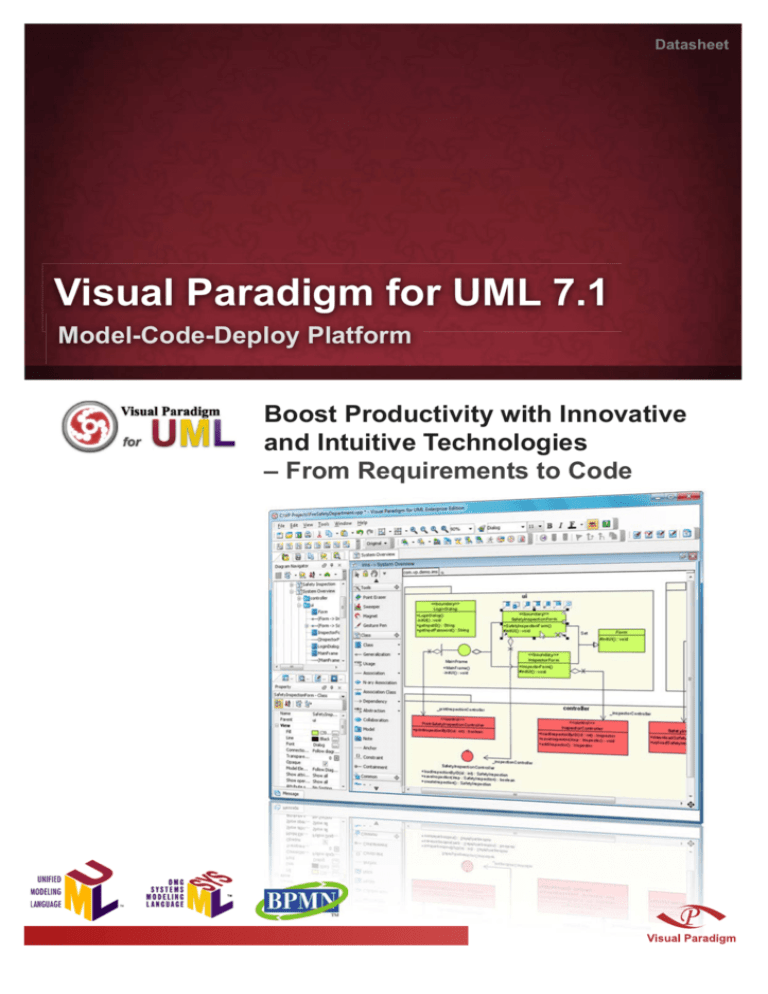

- #Visual paradigm for uml modeler edition software#
- #Visual paradigm for uml modeler edition code#
- #Visual paradigm for uml modeler edition free#
Documenting Requirements with Textual Analysis Toolġ5.4. Drawing interaction overview diagramsġ4.3. Drawing composite structure diagramsġ3.1. Splitting Control Flow in Activity Diagramġ1.1. Organizing diagrams by Model Structure viewĦ.2. Activating Visual Paradigm with Academic LicenseĦ.3. Activating/De-activating Visual Paradigmģ.4. Visual Paradigm’s User Guide (PDF 55,253KB)Ģ.1.

Section 4: Understanding Model & View Concept

#Visual paradigm for uml modeler edition software#
Once you have completed this online training, you will be confident with using Visual Paradigm to design IT software system and collaborate with other team members comfortably. This is very helpful because you might come across with it every day. Last but not least, the training teaches important Visual Paradigm features, like Teamwork with VPository, import project, export images and managing glossary as well. In addition, this course also covers basic introduction to BPMN, UML and UeXceler (Agile requirements capturing approach). After gaining a better knowledge about Visual Paradigm, you can then jump into learning ways to draw different types of diagrams. Firstly, you will start by an overview of Visual Paradigm, different editions and licensing, installation methods as well as its user interface. The lectures cover wide range of contents. We are sure you can master different skills with ease and will have learned most key features in Visual Paradigm after attending the lectures. All lectures embraces clear voice-over as well as demonstrations to walk you through different tools with you step by step. There are altogether 27 lectures throughout the training with more than 5-hour quality videos with user-friendly contents. Visual Paradigm Essential is an introductory course that is tailor-made for software development teams who want to design and build high quality software with Visual Paradigm. Learn all essential skills of software design and modeling including, UML, BPMN and SysML with Visual Paradigm. Visual Paradigm Essential Online Training
#Visual paradigm for uml modeler edition free#
Visual Paradigm Datasheet – Design and Management Tool for Business IT System Development – Version 12.2 (Release Date: September 23, 2015)ĭownload Visual Paradigm Community Edition – Version 12.2 – FREE for non-commercial use only It can reverse engineer diagrams from code, and provide round-trip engineering for various programming languages.
#Visual paradigm for uml modeler edition code#
In addition to modeling support, it provides report generation and code engineering capabilities including code generation. Visual Paradigm for UML (VP-UML) is a UML CASE Tool supporting UML 2, SysML and Business Process Modeling Notation (BPMN) from the Object Management Group (OMG). It also supports use cases, wireframeing, code engineering, etc.

We are not going to explain what are use cases in detail but some of the key concepts regarding to UML modeling, use case diagram and requirements capturing will be covered.Visual Paradigm, a software design tool tailored for agile software projects. In this article, we will go through ten tips that can maximize the effect of drawing use case diagram. While the notations applied in a use case diagram seem simple and do not express much detailed, the way how use cases are collected, organized and elaborated do significantly influence the direction of the software development lifecycle and thus the quality of the final software product. Use case modeling is a useful technique in establishing a solid foundation for software developers to develop software system that meets with customers’ needs. It allows you to visually represent the goals that users want to achieve through using the final end product, which can be a system, a software, a program, etc. Use case modeling is simply an answer to “What do the users (customers) want”. So what is use case? What is use case diagram and is use case modeling simple or powerful? Some people believe that use case diagram is so powerful that can represent many different aspects of a software, from describing system requirements to modeling the internal behaviors of the system. Another misunderstanding is just opposite to the first one. One is that, use case diagram is too simple, as it does not explain anything important and it is not worth drawing. There are two common misunderstanding about use case modeling or UML use case diagram.


 0 kommentar(er)
0 kommentar(er)
